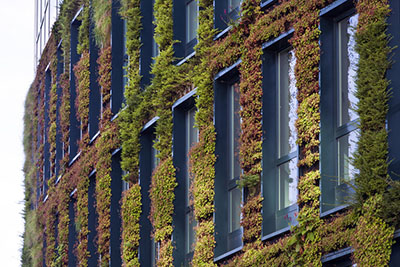SUSTAINABLE ARCHITECTURE TRENDS
 Sustainable architecture has made a notable impression this last decade and it looks set to continue for 2017. What began as the dream of a group of outsiders, has now been accepted in the mainstream. We’ve seen it across our big cities, as well as in our small towns and villages. Local councils and major governments have been creating incentives for developers to build green.
Sustainable architecture has made a notable impression this last decade and it looks set to continue for 2017. What began as the dream of a group of outsiders, has now been accepted in the mainstream. We’ve seen it across our big cities, as well as in our small towns and villages. Local councils and major governments have been creating incentives for developers to build green.
Here are some sustainable architecture trends, big in 2017, that may have already been making their way to a city near you.
Vertical Farming and Biodiversity.
Is that a paddock on your roof? Whether it’s a green roof or a vertical garden, nature seems to be reclaiming our cities. Not only does it add a splash of welcome colour to a concrete skyline, but it’s also great for the environment, in particular providing a breath of fresh air to some of our most polluted cities. Some residents and firms have even gone a step further by installing bee hives on their green roofs, incorporating biodiversity into modern architecture and promoting a healthy ecosystem. The next step is predicted to be a growth in vertical farming. With the world’s population ever growing and global concerns about food shortages, many architects are exploring the possibility of installing crops around the edges buildings; an efficient use of space and with health benefits for residents too.
Cool Roofs.
Cool roofs are an easy and efficient way of keeping a house or any other building cool, reducing the need for air conditioning. They work by reflecting sunlight and absorbing less heat than a standard roof and are made of highly reflective paint, sheet covering or highly reflective tiles or shingles. They are especially handy in countries where it gets hot, can help save on energy bills and are an eco-friendly alternative for the whole neighbourhood. They also cost around the same as a standard roof to install.
Sustainable Construction Materials.
There is now a wider range of sustainable construction materials on the market, making it easier for eco-conscious individuals to construct eco-conscious buildings. One of the staples of sturdy construction is steel and it is now possible to acquire steel made from recycled materials. Recycling materials in house construction is by no means a new thing, looking back to past times, old ship wood used to be re-cycled as beams in house construction. Timber is also making a comeback this year, with entire apartment blocks being made from the material. It is also more sustainable than its main competitors, steel and concrete. Natural paints are also a great eco-friendly choice, reducing on those nasty indoor fumes and are able to decompose naturally.
Lumniventt Technology.
Big corporations have also been incorporating green building into their skyscrapers. A new form of technology called Lumniventt Technology, developed by DMCI Homes, a company engineering skyscrapers in the Philippines, allows for the natural elements to flow through the manmade structures, leaving spaces for the wind and light to pass through the buildings naturally. This reduces the building’s impact on the environment, saves money for the city and has health benefits for the residents too.
and finally, one for the future…
Wooden Skyscrapers.
It might seem like an absurd concept but a group of Scandinavian architects, C.F. Møller Architects and Dinell Johansson, have been working on the idea, creating plans for the world’s tallest wooden skyscraper. They described their constructions, planed for Stockholm’s city centre in 2023, as „ultra-modern residential high-rises”.




